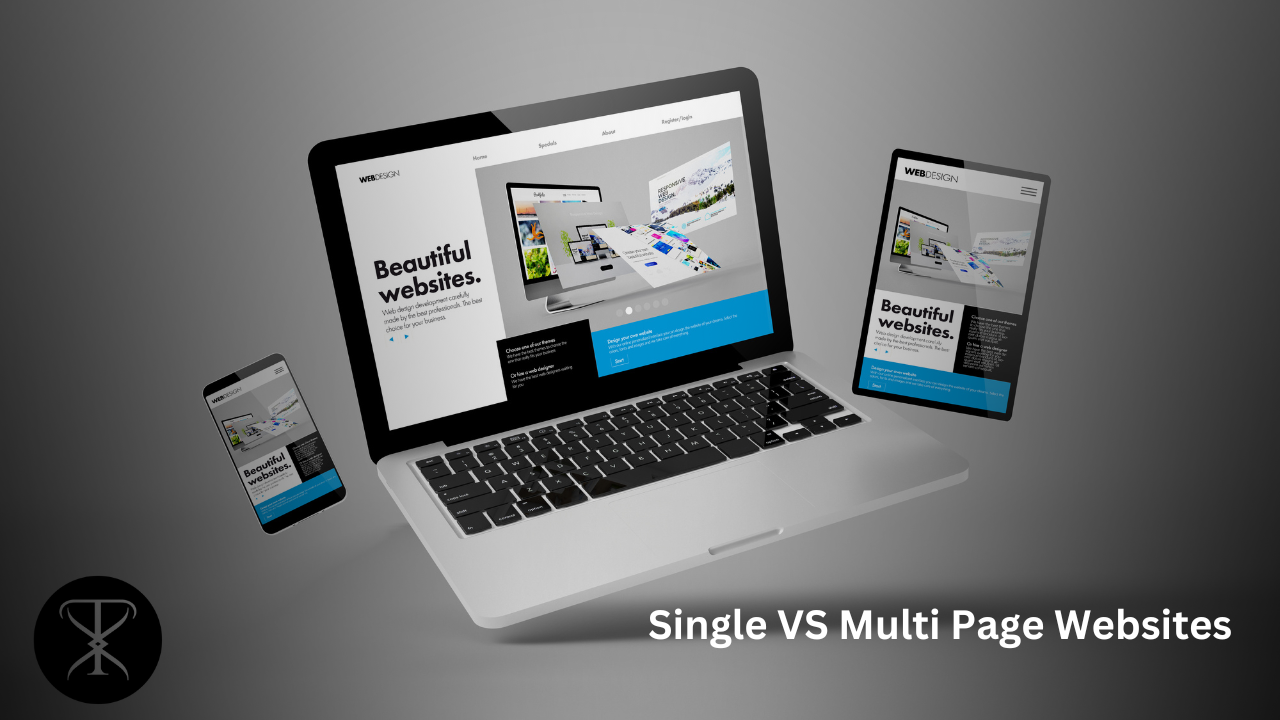| Headings | Sub-Headings |
|---|---|
| Introduction | – Overview of Website Types |
| Understanding Single-Page Websites | – Definition and Key Features – Advantages of Single-Page Websites – Limitations |
| Exploring Multi-Page Websites | – Definition and Core Elements – Benefits of Multi-Page Layouts – Drawbacks |
| Single vs Multi-Page Websites: Usability | – Navigation Ease – User Engagement Factors – Mobile Responsiveness |
| SEO Considerations | – SEO Strategies for Single-Page Sites – Multi-Page Websites and SEO Performance |
| Performance and Speed | – Loading Times – User Experience Impact |
| Content Strategy and Scalability | – Content Organization – Future Growth Considerations |
| Design and Aesthetics | – Creative Freedom – Visual Storytelling |
| Technical Aspects to Consider | – Development Complexity – Maintenance and Updates |
| Use Cases: When to Use Single vs Multi-Page | – Suitable Industries and Projects – Case Studies |
| Impact on Conversion Rates | – Analyzing Conversion Optimization – Case Examples |
| Cost Implications | – Initial Development Costs – Long-term Financial Considerations |
| Analyzing User Behavior | – Analytics and Insights – Adjusting Strategy Based on Data |
| Future Trends in Web Design | – Predictions and Evolving Preferences – How to Stay Ahead |
| Making the Right Choice for Your Needs | – Assessing Business Goals – Consultation with Web Design Professionals |
| FAQs | – Common Queries Addressed |
| Conclusion | – Summarizing Key Takeaways – Final Recommendations |
Single vs Multi-Page Websites: A Comprehensive Guide
Introduction
In the ever-evolving landscape of web development, the debate between single-page websites (SPWs) and multi-page websites (MPWs) remains a hot topic. Both approaches offer distinct advantages and challenges, catering to different needs and objectives. This article provides an insightful exploration into the nuances of single vs multi-page websites, aiming to guide you in making the best decision for your digital footprint.
Understanding Single-Page Websites
Single-page websites present content on a single HTML page, offering a linear experience as users scroll through.
Advantages of Single-Page Websites
- Simplicity and Focus: SPWs streamline the user experience, focusing attention on a specific narrative or journey.
- Enhanced User Engagement: With creative design, SPWs can increase engagement by providing all necessary information seamlessly.
Limitations
- SEO Challenges: Concentrating diverse content on one page can dilute SEO effectiveness.
- Scalability Concerns: Expanding content on SPWs can become cumbersome, affecting performance and usability.
Exploring Multi-Page Websites
MPWs consist of multiple pages linked together, typically structured around a home page and various subpages.
Benefits of Multi-Page Layouts
- Comprehensive Content Strategy: Allows for the organization of extensive information into categorically structured pages.
- SEO Advantages: Facilitates targeted SEO strategies, enhancing visibility for diverse keywords.
Drawbacks
- Navigation Complexity: Can potentially overwhelm users with extensive menus and links.
- Higher Maintenance: Requires more effort to update and manage due to its complex structure.
Single vs Multi-Page Websites: Usability
Navigation Ease
- SPWs offer straightforward scrolling navigation, ideal for storytelling or presenting a cohesive product/service.
- MPWs provide a traditional navigational structure, suited for websites with extensive content across varied topics.
User Engagement Factors
- SPWs can captivate users with immersive storytelling and interactive elements.
- MPWs cater to users seeking specific information, allowing for detailed exploration.
Mobile Responsiveness
Both website types must prioritize mobile responsiveness, though SPWs often have a slight edge due to their linear layout.
SEO Considerations
SEO Strategies for Single-Page Sites
SPWs require a focused SEO strategy, leveraging strong keywords and engaging content to stand out.
Multi-Page Websites and SEO Performance
MPWs benefit from the ability to target a wide range of keywords across different pages, enhancing overall SEO potential.
Performance and Speed
Loading Times
SPWs may load faster initially but can become slower as content expands. MPWs face the challenge of optimizing each page for speed.
User Experience Impact
Both website types aim to offer a smooth user experience, with performance optimization being crucial to retain user interest.
Content Strategy and Scalability
Content Organization
SPWs necessitate concise, impactful content, while MPWs can accommodate expansive content libraries.
Future Growth Considerations
Choosing between SPWs and MPWs involves considering future scalability, with MPWs generally offering more flexibility for content expansion.
Design and Aesthetics
Both SPWs and MPWs offer vast creative possibilities, though SPWs often lean towards more innovative, visually engaging designs due to their narrative nature.
Technical Aspects to Consider
Development Complexity
SPWs might be simpler to develop initially but can become complex with advanced interactive features. MPWs require a structured approach to design and functionality from the start.
Maintenance and Updates
MPWs may demand more ongoing maintenance, but SPWs also require regular updates to keep the single page fresh and engaging.
Use Cases: When to Use Single vs Multi-Page
Choosing between SPWs and MPWs depends on your project’s nature, with SPWs being ideal for portfolios, event promotions, and landing pages, while MPWs suit content-rich sites like news portals and e-commerce platforms.
Impact on Conversion Rates
Both SPWs and MPWs can be optimized for conversions, but the strategy differs. SPWs focus on a singular call to action, whereas MPWs can guide users through a journey towards conversion.
Cost Implications
The initial and long-term costs vary, with SPWs potentially lower in cost due to their simplicity but can increase with complexity. MPWs involve higher initial investment but may offer better ROI in the long run due to their scalability.
Analyzing User Behavior
Understanding user interaction through analytics is crucial for both SPWs and MPWs, enabling data-driven optimizations.
Future Trends in Web Design
Staying abreast of web design trends is essential, with both SPWs and MPWs evolving to meet user expectations and technological advancements.
Making the Right Choice for Your Needs
Assessing your business goals and consulting with web design professionals can help determine the best approach for your online presence.
FAQs
Here are some common questions related to single vs multi-page websites, providing further clarity on this topic.
Conclusion
The choice between single and multi depends on what service your website fulfills.
References
- “The Impact of Page Structure on User Engagement” – Nielsen Norman Group
https://www.nngroup.com/articles/page-structure-engagement/ - “SEO Best Practices for Single Page Sites” – Moz
https://moz.com/learn/seo/single-page-websites - “Web Design Trends for 2024” – Smashing Magazine
https://www.smashingmagazine.com/2023/12/web-design-trends-2024/ - “How to Choose Between a Single or Multi-Page Website” – Webflow Blog
https://webflow.com/blog/single-page-vs-multi-page-websites - “Analyzing User Behavior on Different Website Types” – Kissmetrics
https://www.kissmetric.com/user-behavior/ - “The Cost of Building a Website: Single-Page vs Multi-Page” – SitePoint
https://www.sitepoint.com/cost-building-website-single-vs-multi-page/





